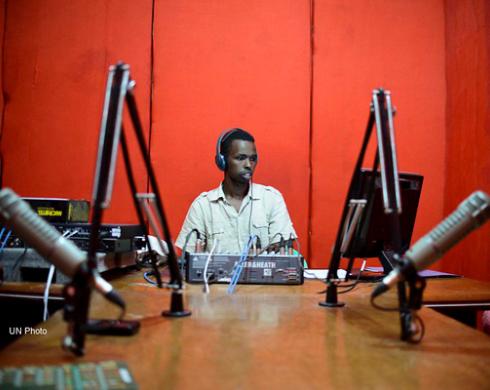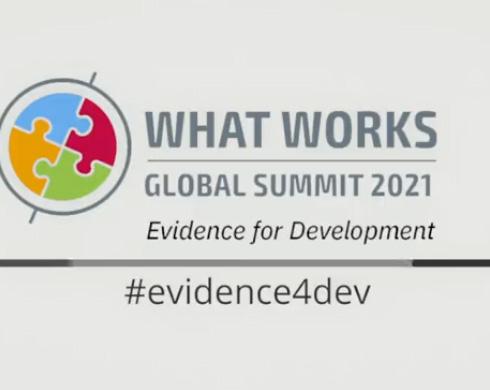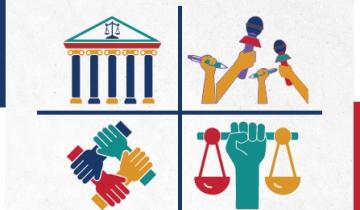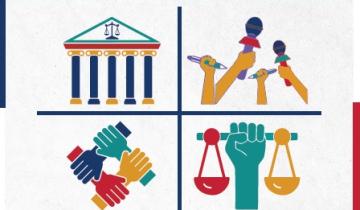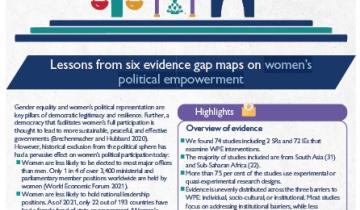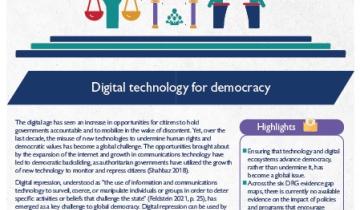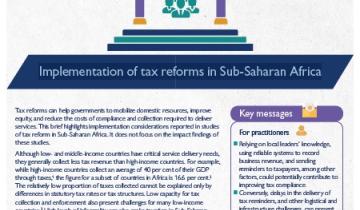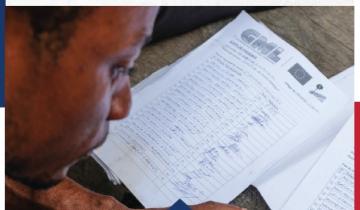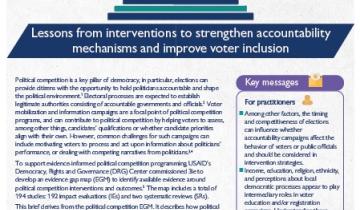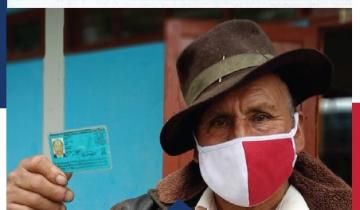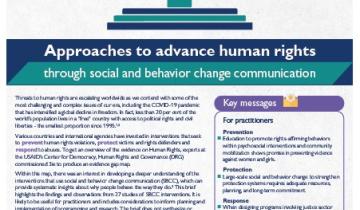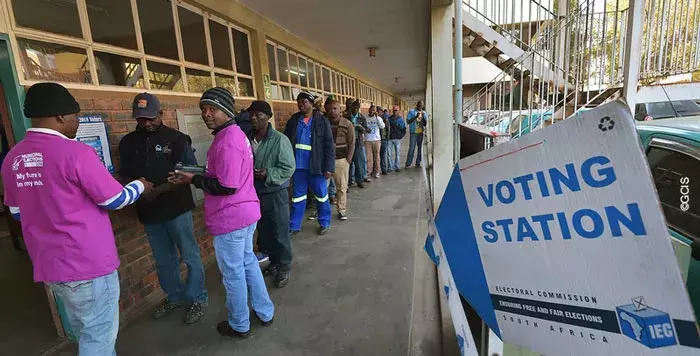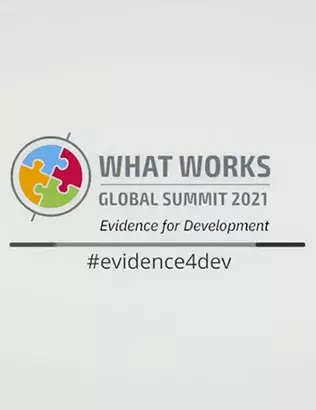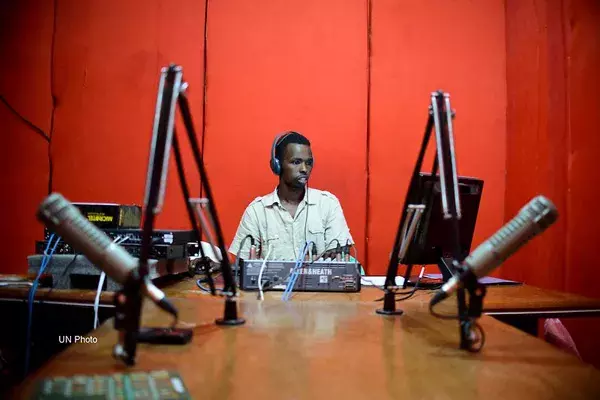Evidence Mapping for Democracy, Human Rights and Governance
USAID’s Center for Democracy, Human Rights, and Governance commissioned 3ie and NORC at the University of Chicago to strengthen the evidence base in their work areas: rule of law, human rights, civil society, independent media, good governance and political competition.
We created six maps (one for each area) and reports summarizing the findings to provide an overview of the evidence. Our ‘practitioner briefs’ on a few intervention areas aim to inform investments in research. To further facilitate decision-making, we analyzed the differences and similarities between the maps and focused briefs on themes like digital technology and women’s political empowerment.
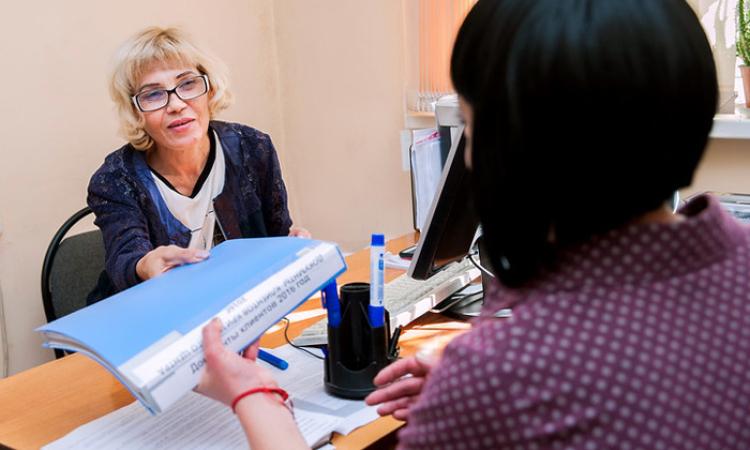
What are evidence gap maps?
3ie’s evidence gap maps collate the best-available evidence from high-quality impact evaluations and systematic reviews. These can guide development practitioners who seek to commission research, implement interventions or know how to improve the effectiveness of programs.
The framework for each map is developed through consultations with sector experts and key stakeholders. Our study protocol outlines the process we follow and the interventions and outcomes that will be visible. In addition to the interactive map and analysis, we have developed practitioner briefs on select themes.
Each of the maps will also help inform the formulation of questions for the Center’s Learning Agenda that supports building sector knowledge and evidence base to inform USAID programming.
To help first-time users navigate our maps and reports, we suggest reading the user guide.
Maps, reports and briefs
Rule of law
Effective rule of law ensures that laws and the justice institutions, and the actors and processes that support them protect individual rights and are responsive to and inclusive of the needs of all people in society. As estimated 5.1 billion people have no access to effective justice and nearly 60 per cent of existing justice problems remain unresolved (Justice for All: Report of the Task Force on Justice, 2019).
While the international development community has increased programming aimed at promoting justice for all, there is a need to better understand the evidence base underpinning those interventions to help policymakers and practitioners understand which interventions are effective for which outcomes and why.
This map includes interventions focused on strengthening and building linkages between systems, services, and society to improve prevention of and solutions to justice problems. It highlights significant evidence on interventions that aim to prevent and reduce crime and a notable gap on programs focusing on youth in low-and middle-income countries (L&MICs) and women and girls.
View the interactive EGM | Read protocol
View practitioner brief on systems-level interventions
View practitioner brief on society-level interventions
View practitioner brief on service-level interventions
Human rights
Human rights programming encompasses a vast variety of interventions and is guided by several international and national legal frameworks. Understanding the gaps and the evidence on the effectiveness of these interventions can help inform policymakers and practitioners on where resources are most needed. In this evidence gap map, we look at two sub-sets of human rights: civil and political rights and economic, social and cultural rights.
Within these subsets we look at interventions focused on education and promotion of human rights, reform of legislation, strengthening justice and security, support for human rights defenders, among several others. These interventions are mapped to a variety of outcomes, providing users of the map a broad picture of the existing evidence and gaps.
View practitioner brief on social behaviour communication change interventions
View practitioner brief on combatting trafficking in persons interventions
Civil society
Civil society organizations, whether formal or informal, play an essential role in maintaining an open society, building up democracy and the rule of law. According to CIVICUS (2020), only three per cent countries have a strong and open civil society space, leaving around 5 billion people with limited access to a narrow, repressed or even closed civic space.
Civil society organizations rely on funding from international and national donors, and an enabling environment to operate in. As these spaces and resources shrink, it is essential to make efficient use of limited resources available.
While there is qualitative and observational evidence on a variety of civil society interventions and outcomes, much of the evidence does not establish impact. This map will improve the access to understanding about the effects of interventions to strengthen civil society in L&MICs such as supporting the capacity or development of organizations working in human rights, business, religion, democracy, environment, labor, media, and independent research, among others.
View practitioner brief on closed civic spaces
View practitioner brief on participatory decision-making
View practitioner brief on monitoring public and private institutions
Independent media and free flow of information
Depending on the metrics used, between approximately half (Reporters without Borders, 2016) to 13% (BBC Media Action, 2016) of the world’s population has access to an independent media. Interventions aimed at strengthening independent media and free flow of information include interventions that promote or strengthen mediums for citizens to conduct free and open communication, engage with government and civil society, and increase constituency mobilization, and/or oversight of government functions to increase transparency and accountability. While there is limited evidence in terms of impact evaluations or systematic reviews on the effectiveness of such interventions, there are other research sources that can provide insights for practitioners and policymakers.
View practitioner brief disseminating information through media
In addition to the maps on rule of law, human rights, civil society and independent media, 3ie is also working to map the evidence on good governance and political competition and consensus building.
Good governance
An increasing body of evidence highlights the importance of good governance for development. However, international evidence indicates that nearly one in four survey participants declare having paid a bribe when accessing public services, 57% of participants around the world do not think their government is successfully fighting corruption, and some public services, such as policing, are seen as highly corrupted for 39% of the people in Asia Pacific and 47% in sub-Saharan Africa (Transparency International, 2017).
As donors consider the ability of governments to use and distribute aid effectively, governance and anticorruption represent key priorities for the global aid agenda (Cheney, 2019; World Bank, n.d.-b). For example, OECD DAC official commitments for government and civil society rose from $2.5 billion in 1995, the first year for which data is available, to $12.7 billion in 2019 (OECD, n.d.-a).
The purpose of this map is to determine the distribution of the evidence regarding interventions to strengthen government effectiveness in L&MICs and provide easy access to this literature.
View practitioner brief on tax reform interventions in Sub-Saharan Africa
Political competition and consensus building
A politically competitive society allows citizens the opportunity to form political parties, compete for power through elections and shape the direction of public policy (Strom, 1992). The United Nations Human Rights Office has claimed that free and fair elections are a fundamental concept in the effort to protect and promote human rights, and that every citizen should have the right to vote and stand for office (OHCHR, 2011).
A rise in missions and interventions has increased the need for funding, but the nature of the missions themselves has also changed. Nevertheless, the funding landscape around political competition remains unclear.
While there are a few reviews on the topic of political competition, these do not directly address the impact of political competition interventions. This EGM will help compile and provide easy access to interventions focused on the impact of different but specific aspects of the electoral cycle in L&MICs.
Understanding the evidence base
To help users get an overview of the studies included in the maps, the differences between maps and what the current evidence base says, we developed complementary products.
Comparative analysis of evidence across maps: Understanding the similarities and differences between maps can help identify areas for collaboration in program design or investment in future research.
View report
Summarizing the evidence across maps: This brief can be an effective starting point for those seeking to understand the existing evidence base for DRG programmatic areas.
View report
Thematic analysis
The DRG Center identified a few priority themes, where understanding the evidence and gaps could inform ongoing policy and program discussions. We developed:
Understanding digital technology for democracy: This brief draws on 111 studies from across all six maps that focused on key technology issues and studies that can inform the framework.
Read brief
Lessons on women’s political empowerment: This brief analyses a sub-set of studies from the six evidence gap maps that focus on women’s political empowerment interventions.
Read brief

